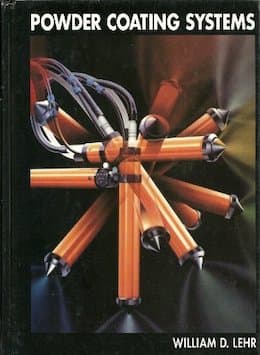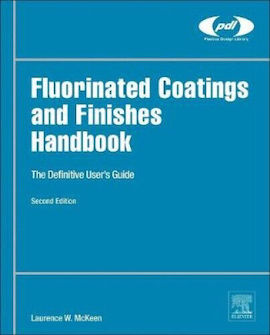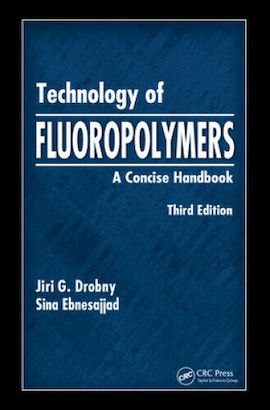
-----
PVDF / Kynar® vs. Powder coating
Q. I'm fabricating a steel sculpture for West Los Angeles VA hospital and we are looking for an appropriate finish.
Designer is specifying textured finish in either architectural bronze or something similar to a weathered steel.
I can achieve those finishes in a powdercoat but I'm concerned about UV stability (the sculpture will receive full sun). I see that a PVDF coating has great UV stability. But I only see it applied to thin roofing panels and sheet metal. The sculpture in question is 1/2" steel plate.
My questions are:
1. Does PVDF come in a textured finish?
2. If not, would it be possible to apply a PVDF finish in the field over top the powdercoat when the time comes (10-15 years)?
FABRICATOR - LOS ANGELES, California
October 25, 2024
⇩ Related postings, oldest first ⇩
Q. I have four cast iron bollards scheduled to be installed (exterior) at our Harlingen Campus.
The department wants a Kynar Finish. I believe that a Powder Coating will provide an equal if not better finish and will last long.
I need data that I can use to prove my opinion. Can you help?
Tom J [last name deleted for privacy by Editor]University - San Antonio, Texas
2003
for Shops & Engineers

avail from eBay, AbeBooks, or Amazon

avail from eBay, AbeBooks, or Amazon

avail from eBay, AbeBooks, or Amazon

avail from eBay, AbeBooks, or Amazon

avail from eBay, AbeBooks, or Amazon

avail from AbeBooks, or Amazon
avail from AbeBooks, or Amazon
(as an Amazon Associate & eBay Partner, we earn from qualifying purchases)
A. Dear Tom:
Kynar is PVDF based coating which is guaranteed for 20 years of environmental exposure. Normal powder coatings are nowhere near it - to the best of my knowledge. I am afraid, you may not find what you are looking for.
Gurvin SinghMohali, Punjab, India
A. Hi Tom,
With the correct pretreatment and application, powder coatings are available with a guarantee for 25 year environmental exposure. These powder coatings have been available for a long time and are common in Europe. Hope this helps.
Drew Devlin- North Lincolnshire, U.K.
A. PVDF or Kynar being a brand name, is a coating that can carry a lengthy warranty relating to color & gloss retention. A schedule of loss is applied to the product. Mechanical failure is generally not part of that. Warranties never apply to steel products. My advice is to sandblast the item white, handle minimally with clean gloves, Zinc prime, checking substrate temperature, powder coat with a finish product of SD quality polyester or TGIC free Sd polyester. Read any warranty. The 7 p's apply to powder coating. Prior Proper Planning Prevents Piss Poor Performance. Also know that Kynar® or PVDF is not usually the recommended product on traffic & heavy contact areas by the reps I have dealt with. This comment is a personal opinion & not extended as fact.
Sheldon Pineo- Fort Myers, Florida
June 4, 2009
Q. Would anyone tell me more details about "Kynar" & its application..... thanks

Atul Bhide
jobshop / applicator - Mumbai, India
2003
A. Hi Atul.
Kynar® is a trade name for PVDF based coatings. The general idea behind them is that the carbon-fluorine bond is impervious to UV radiation and several other factors which cause coating degradation, so very long service life in exterior applications is often possible.
As for application methods, there are videos for application to asphalt roofs, etc., the gist of which are that Kynar is a proprietary product offered with a warranty which is only applicable if it is applied in full accord with the manufacturer's specifications, including an elastomer base coat under it. Only licensees can apply it.
Other types of Kynar and PVDF coatings can be sprayed or roll coated onto metal sheet material in the factory. Please explain the application you have in mind, and where you fit into the situation (for example, are you wanting to coat metal individual items with Kynar yourself, or looking to job out that portion, or looking to buy precoated sheet you can fabricate, etc.) ... Kynar, due to complexity and license issues is perhaps not an ideal coating for onesy-twosy pieces. Thanks!
Luck & Regards,

Ted Mooney, P.E.
Striving to live Aloha
finishing.com - Pine Beach, New Jersey
Ted can be retained for immediate
answers or long term project help
[editor appended this entry to this thread which already addresses it in lieu of spawning a duplicative thread]
What are the pros and cons of powder coating versus PVDF (i.e. Kynar 500) coatings?
Louis Fry IIIArchitect - Washington, DC USA
2005
Q. Is Powder coating on steel as effective as on aluminum for preventing corrosion and maintaining color uniformity and luster? Exterior exposure.
For how long?
ceilings - Los Angeles, California
February 12, 2008
A. Joe, please read Drew's and Sheldon's entry carefully because they cover some stuff that experts like them realize, but many people don't: it's largely about the pretreatment! If appropriate and high quality powder coatings are applied to properly pretreated materials, the durability will be excellent. But no matter how exotic the paint or powder, if the pretreatment isn't good, the coating won't be either. Steel parts require a well done phosphatizing step before powder coating, and ideally also will also include electropaint priming. Good luck.

Ted Mooney, P.E.
Striving to live Aloha
finishing.com - Pine Beach, New Jersey
Ted can be retained for immediate
answers or long term project help
Q. What is the difference between thermoset and thermoplastic treatment for powder coating?
zia ullah khan- Dubai . U.A.E.
June 28, 2008
A. Hi, Zia. Thermoset plastics are plastics that cure into a different state than they started in -- sort of a one-way street. Once they have been heat cured they can never return to their original condition, you can't usefully melt them. Thermoplastic materials are plastics that soften with heat, repeatedly. If you make a block of thermoset plastic, it would stay in that shape forever; if you formed a block of thermoplastic material you could, in theory at least, form it into a different shape the next time you applied heat.
When it comes to using these plastics in powder coating, the biggest differences seems to be that thermoset materials are thin (a few mils) whereas thermoplastic coatings are much heavier; thermoset materials are almost always applied by electrostatic spray, while thermoplastics are usually applied by immersion into a fluidized bed.
Regards,

Ted Mooney, P.E.
Striving to live Aloha
finishing.com - Pine Beach, New Jersey
Ted can be retained for immediate
answers or long term project help
Q. Difference between PVDF, polymer and polyester coating? I am new in metal roofing industry and I would appreciate if anyone can enlighten me on the above differences and advantages.
Thanks in advance.
- Singapore
February 5, 2013
Q. We are considering the use of steel metal cladding and roofing paneling with a Kynar 500 finish for some small utility buildings in an industrial process facility. What are the effects of fluorides, both particulates and gaseous, on Kynar 500 coating? Can we expect the coating to last 5 years, 10 years? Maximum levels of particulates 12,500 ug/m3 per 24-hour period.
Randy Hansen- Phoenix, Arizona, USA
July 25, 2013
A. Yes, if installed properly and well maintained it should last 5-10 years, maybe a little longer per BS4994. Halar (ECTFE) might be better but it is fairly expensive.

Blake Kneedler
Feather Hollow Eng. - Stockton, California
A. This thread is a little convoluted, so I answer what appears the central question. Kynar is a PPG trade mark for a PVDF resin system. PVDF is a fluorocarbon based polymer which when it comes to things like weathering properties is at the top of the food chain. This is why many architects specify it for buildings. Polyester is more of general purpose resin system used for more mundane, less critical, painting. Powder coating is paint that is applied without the use of solvent, though different resin systems can be used, including polyester.
When it comes to things thermoplastic to thermoset you learn quickly if you have a chemical like MEK on your hand don't pick up a phone or a plastic stopwatch, no chemical resistance.
coil coating - Brampton Ontario Canada
Ed. note: Apologies, but yes, threads do become convoluted as readers read something interesting and then extend the question in various directions :-)
Powder Coated Aluminum vs. Galvanized Metal with Kynar for Commercial Railings in Coastal Environment
Q. We are looking to install new railings at a hotel in the harsh coastal environment on the Monterey Peninsula, California.
We have a lot of linear feet of railing (so cost/value is a consideration) and I'd like the railings to be modular or built off-site and we can "simply" install on site.
One architect has recommended a modular, powder coated aluminum railing product, and another architect has recommended galvanized metal with Kynar paint.
I'm concerned by some images I've seen of the powder coat flaking off on aluminum. I have no experience with Kynar.
Any thoughts or recommendations? THANK YOU.
Greg
- Monterey, California
May 20, 2014
A. Hi Greg. I think you can pick the railing material you wish (galvanized or aluminum), independently of which final finish you want (Kynar or a more mundane powder coating). I think I'd mix-&-match and go with the Kynar on the aluminum. But Kynar on galvanized should last the better part of forever.
A point we should continue to repeat in case there are any newbies reading this posting is that pretreatment is critical -- not only will the paint not stick properly to the aluminum if not pre-treated well, it will pull off the galvanizing in sheets :-)
Zinc phosphatizing is required for the galvanized, and chromate conversion coating for the aluminum. Best of luck.
Regards,

Ted Mooney, P.E.
Striving to live Aloha
finishing.com - Pine Beach, New Jersey
Ted can be retained for immediate
answers or long term project help
Q. Thank you for your response.
With powder coating, I understand that you can't easily "repaint" it or touch it up if it gets scratched or if color palettes change in the future.
With a product like Kynar, can we paint over the original if we want to change the color in a few years or if it gets scratched or worn out?
- Menlo Park, California United States
May 21, 2014
A. Hi again. Anything can require touch-up, and consequently there are touch up materials for either finish, although the touch-up may not have the durability and longevity of the oven-cured finish, nor necessarily be easy. Repainting of either to accommodate color changes is probably a pretty big deal, best avoided, but farmed out to experienced parties if necessary. For example, Kynar is a non-stick surface probably requiring an exacting process to obtain good adhesion. Firms who offer both can probably advise the details of repainting the various finishes.
Regards,

Ted Mooney, P.E.
Striving to live Aloha
finishing.com - Pine Beach, New Jersey
Ted can be retained for immediate
answers or long term project help
Paint touch up on PVDF coated steel door
Q. Hai sir
Here we have some PVDF coated steel doors (RAL 1013). Now, due to some heavy work on site, there are lot of scratches on the PVDF coated doors. Can anyone please advise me how to do paint touch of same colour on the PVDF coated door? I'm expecting your positive replies soon, thank you.
- Qatar
October 21, 2017
A. Hi Saravana,
Getting paint to stick to PVDF will be an issue because it is a non-stick finish somewhat similar to Teflon. Suppliers like Kynar offer instructions to do spot repairs, but it may involve heating or other requirements which you may find impractical for your situation.
If this is just a routine repainting of commonplace doors, there are specialty adhesive coatings that can be applied, followed by repainting. But if this is an extreme exposure which justified PVDF in the first place, and/or you need to maintain the warranty, you'll have to follow the exacting instructions from the original supplier.
Luck & Regards,

Ted Mooney, P.E. RET
Striving to live Aloha
finishing.com - Pine Beach, New Jersey
Ted can be retained for immediate
answers or long term project help
Q. On a salt water boat, which will be a better product on T-tops, rails, etc? They complain that powder does not hold up very well. Would Kynar be a better choice?
Eric jonespainter - ft.pierce, Florida
October 19, 2018
A. Hi Eric. Kynar will outlast powder coating, but please remember that preparation/pretreatment provides about 80% of the durability and the paint/powder about 20% :-)
Are these T-tops, rails, etc., made of aluminum? If so, they should be properly prepped and chromate conversion coated (Alodine, Iridite, MIL-DTL-5541 [⇦ this spec on DLA]) before any painting or powder coating. Best of luck.
Regards,

Ted Mooney, P.E. RET
Striving to live Aloha
finishing.com - Pine Beach, New Jersey
Ted can be retained for immediate
answers or long term project help
Q. What is the best and environmentally friendly way to pre-clean before coating. The EPA is my big concern on haz/mat waste.
eric jones [returning]auto care center - ft.pierce, Florida
October 22, 2018
A. Hi again Eric. EPA regulations are "categorically" based, meaning that an auto care center will have regs that are different from the regs a plating shop has, or a high school has, or an aluminum fabrication shop has, or other categories of businesses have. So you need to find out from EPA or figure out exactly what category your business falls into.
Regardless of any of that though, aluminum should be non-etch cleaned, etched if necessary, desmutted/deoxidized, and chromate conversion coated. There are now chromate conversion coatings which comply with Mil DTL-5541 (meaning that they have been proven to offer good adhesion and good corrosion resistance) but are free of hexavalent chromium (Type II coatings). These go by the slang name TCP (trivalent corrosion prevention) coatings, and are considered environmentally friendly.
I'm not saying you absolutely can't prep and paint such parts yourself, but usually such parts are handled in treatment lines which involve immersing the parts sequentially in tanks full of the chemicals I mentioned (with rinsing between each step).
Regards,

Ted Mooney, P.E. RET
Striving to live Aloha
finishing.com - Pine Beach, New Jersey
Ted can be retained for immediate
answers or long term project help
Q. What is the best way to wash aluminum to be Kynar coated. I don't want any haz/mat material left over to deal with. Would like to send down city sewer system.
I am going to open a plating shop and I have boat Manufacturing all around me. And I have two powder coating places. But they don't use Kynar. I asked you about this already. And washing the parts and disposal of the chemical after it's done is my concern. I would like to put it the the city sewer system. If it safe to do that? Trying to get my cost up front
Eric jones [returning]
owner - ft.pierce Florida,
October 23, 2018
A. Hi again Eric. Kynar can only be applied by licensees, so insuring that you will be able to get a license is step one. Secondly, I'm not quibbling over words but concepts when I say you don't "clean" aluminum for painting or powder coating, you "pretreat" it ... which involves a lot more that just cleaning.
The EPA enforces discharge and performance standards on your local POTW (publicly owned treatment works / sewer system), and they in turn enforce standards on the businesses discharging to them. It's not like residential sanitary waste where you just flush; rather a company is not allowed to discharge industrial process waste to the sewer except in accordance with their discharge permit. So your best next step is probably to contact your local POTW and find out what "category" they consider you to be and what the effluent limitations for that category are, and to start applying for a discharge permit.
It is a possibility, but not likely, that you can discharge all of your pretreatment and (non-hexavalent) chromate conversion coating wastes to the sewer under the terms of your permit. It's more likely that you'll have to have an industrial waste pretreatment system. There are probably things like solvents, stripping solutions, dregs from your paint drums, etc. which you cannot discharge but which must be hauled by a licensed disposal company ... and there may be regulations regarding not just the eventual disposal, but accumulation & storage & record keeping for these wastes. Environmental compliance is unfortunately not a simple, cheap, straightforward thing -- which is why there are environmental consultants and attorneys in every geographical area if you want to start there ... but again it's not a matter of figuring out what you can discharge to the sewer without a permit, you can't discharge any industrial waste into a sewer except in accord with a discharge permit. Best of luck.
Regards,

Ted Mooney, P.E. RET
Striving to live Aloha
finishing.com - Pine Beach, New Jersey
Ted can be retained for immediate
answers or long term project help
Ed. note: Please see also thread 3066, "Aluminum Anodizing vs. Powder Coating vs. Kynar vs. Clear Coating"
Q, A, or Comment on THIS thread -or- Start a NEW Thread

